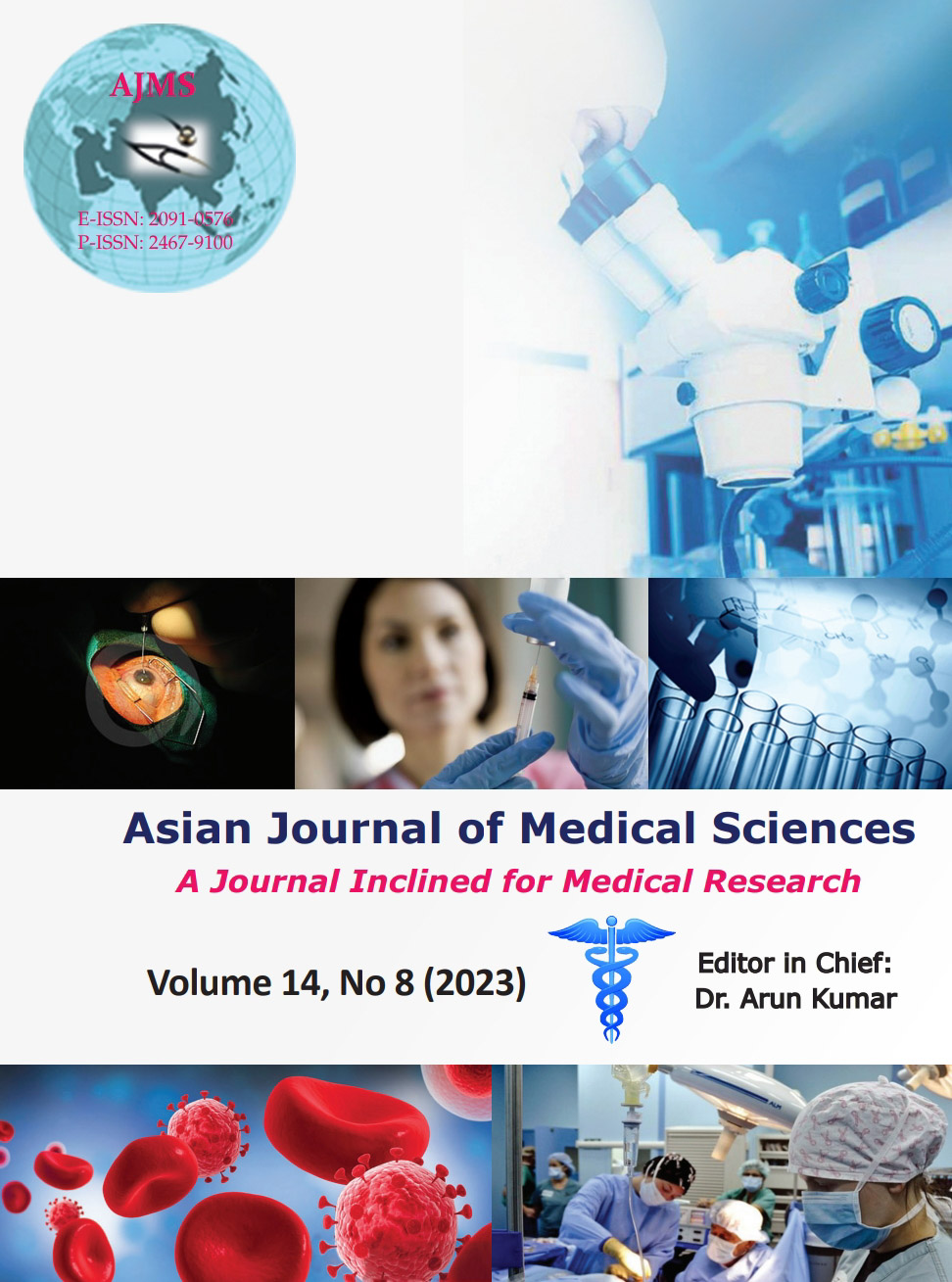To compare the safety and efficacy of intrastromal voriconazole alone and in combination with intracameral voriconazole in intractable cases of fungal keratitis
Keywords:
Contact lenses; Mycoses; VoriconazoleAbstract
Background: Mycotic keratitis is a potential sight-threatening infection and a leading cause of ocular morbidity worldwide. It is inherently difficult to treat due to the delayed diagnosis and fungistatic nature of available topical medications.
Aims and Objectives: The aim is to compare the safety and efficacy of intrastromal voriconazole alone and in combination with intracameral voriconazole in recalcitrant fungal keratitis cases.
Materials and Methods: A prospective, hospital-based, interventional study was conducted in 40 cases of fungal keratitis involving >50% stromal thickness and not showing a good response to conventional antifungal treatment even after 4 weeks. Cases were randomly divided into two groups: group A and group B of 20 each; group A patients received intrastromal voriconazole, while group B patients were given intrastromal+intracameral voriconazole combination in 50 mg/0.1 mL dose. Cases were examined daily for 1 week and then every week for 4 weeks to monitor progression.
Results: Out of 20 cases in group A, 14 (70%) patients got improved, while 18 (90%) patients in group B showed significant improvement after 4 weeks, and the difference was statistically significant (P=0.02). In group A, the average number of injections given to the patients was 3.65±1.56 for 15.2±8.79 days, while in group B, the average number of injections given to the patients was 2.65±1.44 for 13.2±7.768 days, with a statistically significant difference (P=0.033).
Conclusion: Intrastromal and intracameral voriconazole combination is a cost-effective and highly efficacious modality in managing recalcitrant cases of fungal keratitis. It should be recommended in cases with thick hypopyon and Aspergillus as the causative fungi that do not respond to conventional treatment.
Downloads
Downloads
Published
How to Cite
Issue
Section
License
Copyright (c) 2023 Asian Journal of Medical Sciences

This work is licensed under a Creative Commons Attribution-NonCommercial 4.0 International License.
Authors who publish with this journal agree to the following terms:
- The journal holds copyright and publishes the work under a Creative Commons CC-BY-NC license that permits use, distribution and reprduction in any medium, provided the original work is properly cited and is not used for commercial purposes. The journal should be recognised as the original publisher of this work.
- Authors are able to enter into separate, additional contractual arrangements for the non-exclusive distribution of the journal's published version of the work (e.g., post it to an institutional repository or publish it in a book), with an acknowledgement of its initial publication in this journal.
- Authors are permitted and encouraged to post their work online (e.g., in institutional repositories or on their website) prior to and during the submission process, as it can lead to productive exchanges, as well as earlier and greater citation of published work (See The Effect of Open Access).




